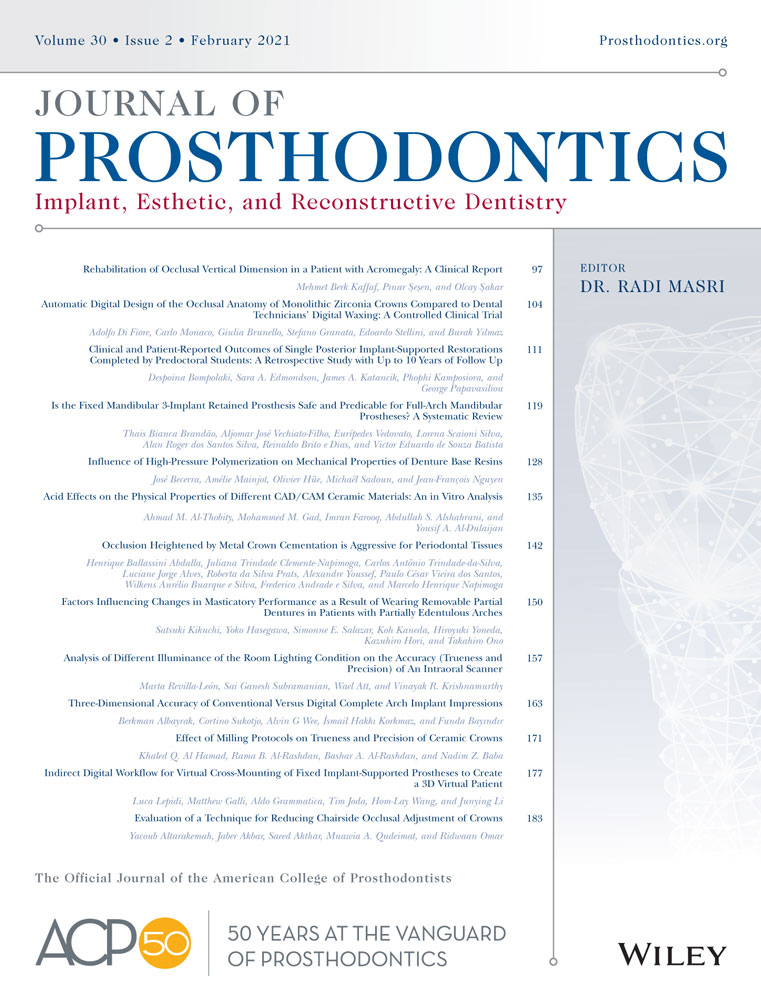Clinical and Patient-Reported Outcomes of Single Posterior Implant-Supported Restorations Completed by Predoctoral Students: A Retrospective Study with Up to 10 Years of Follow Up
Abstract
Purpose
To assess clinical outcomes of screw-retained implant-supported restorations as well as patient satisfaction and Oral Health-related Quality of Life (OHQoL), when treatment is performed in an academic setting by supervised predoctoral students.
Materials and methods
Ninety patients (n = 129 restorations) consented to participate in the study. The mean follow-up period was 4.2 years (range: 4 months to 10.6 years) after crown insertion. All patients filled out a modified Oral Health Impact Profile questionnaire, consisting of 14 questions (OHIP-14). A comprehensive examination of the implant-supported restoration was completed and restorative complications were recorded. Statistical analysis was performed using SPSS (IBM SPSS Statistics, v25; IBM Corp). Restoration survival rates were calculated using Kaplan-Meier survival analysis.
Results
The most frequent complication was loss of the mesial interproximal contact (32.2%). The overall restoration survival and success rates were 93.8% and 74.4%, respectively. The majority of patients (95.6%) reported high satisfaction with their decision to get implant treatment in the predoctoral clinic.
Conclusions
In the context of this study, clinical and patient-based outcomes of implant treatment rendered in an academic setting are favorable and comparable to those reported in the literature for restorations completed by experienced dentists.




